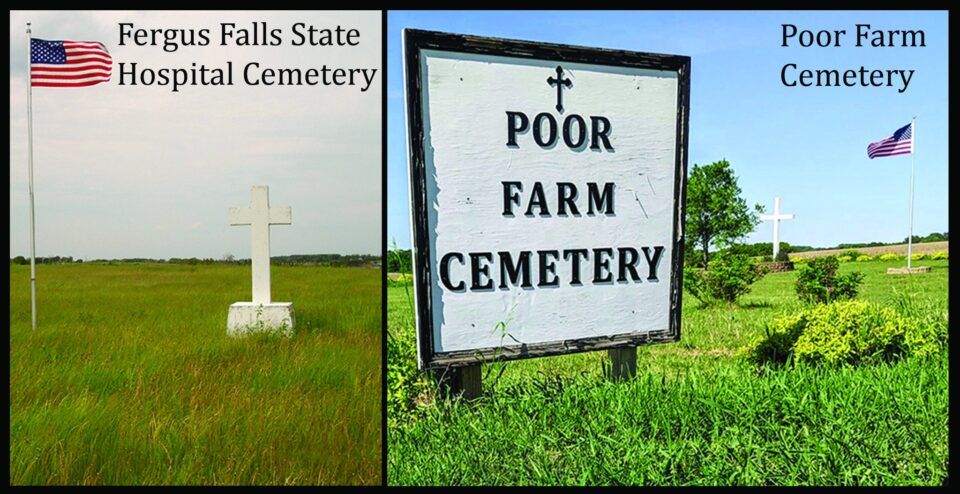
The 1890 Fergus Falls State Hospital was modeled after the moral management concepts of pioneering physician Thomas Kirkbride. Kirkbride advocated for more humane treatment of the mentally ill including asylums that allowed for maximum light and ventilation. Patients were also encouraged to work as that provided a sense of purpose that helped regulate the mind and improve physical fitness.
One area of hospital management that did not live up to Kirkbride’s philosophy was how to deal with dead patients. Patients who died at the hospital and had no family to claim them were buried in a plot of land north of the facility. Graves were marked with simple wrought iron stakes identified by a number. There were no names or dates. It was as if they never existed.

Poor Farm Cemetery

Just west is the Otter Tail County Poor Farm cemetery. Before there was any sort of government safety net who was responsible for the poorest of the poor? The State of Minnesota put that responsibility on individual counties. In 1881, the county established a Poor Farm two miles north of Fergus Falls. From the 1890s until the mid 1930s over 150 people were buried at the poor farm cemetery. As far as we know, these grave sites were left unmarked.
On Saturday, October 21 at 11 a.m., the Otter Tail County Historical Society is sponsoring a tour of the State Hospital cemetery and the Poor Farm cemetery. Join OTCHS Executive Director Chris Schuelke as he explores the history, the forgotten history of these cemeteries and some of the people buried in them. The cost is $10. Park in the back lot of the Minnesota Veterans Home, wear comfortable shoes and dress for the weather.
What a great opportunity for a weekend escape!
